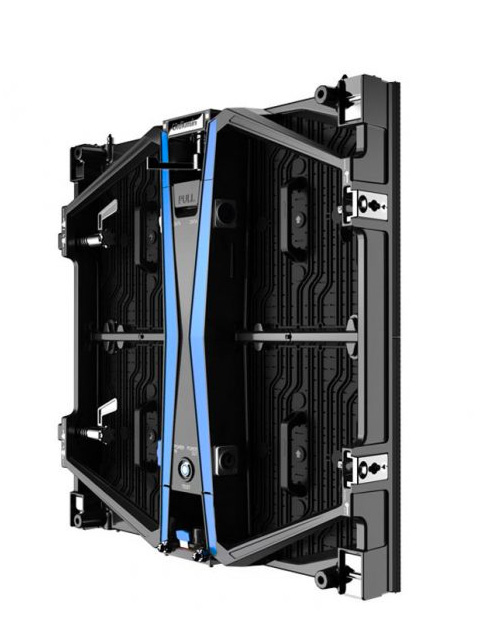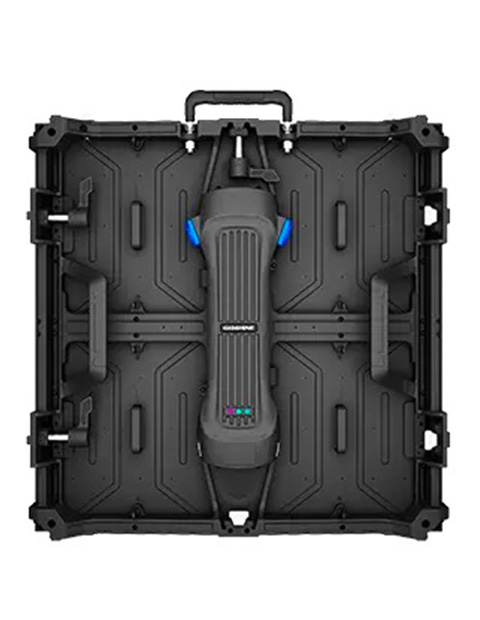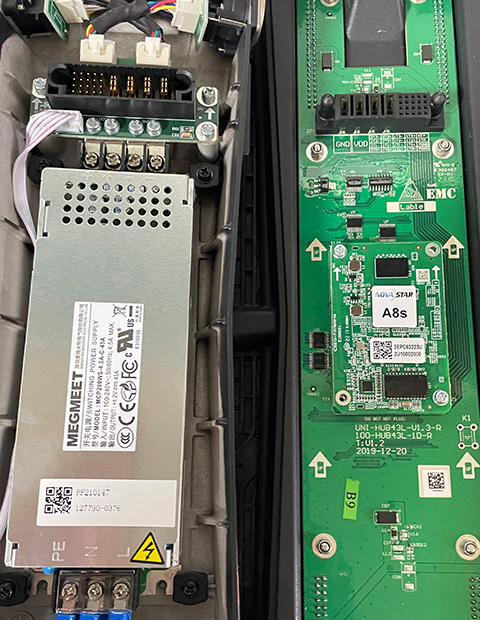In recent years, with the continuous technological advancement of LED screen manufacturers, the variety of transparent LED screens has been continuously enriched, and customized services can be provided according to different installation environments and sizes. Transparent LED screens are famous for their thinness, high transparency, and seamless installation, and are widely used in the commercial display market. So, what are the solutions for transparent LED screens for restaurants and hotels? Here, second-hand LED screen supplier GDHANHENG introduces a brief guide.
Transparent LED screen background
In the display application, screen sizes below 100 inches are usually dominated by LCD walls and DLP projectors. In comparison, screen sizes above 100 inches are mainly dominated by full-color LED video walls. However, traditional LED displays have been criticized by the public due to problems such as large size, complex installation structure, light pollution, and noise. In order to solve these problems, LED display manufacturers have developed LED bar screens and LED grid screens. Still, the latter’s image sharpness is limited. As a result, LED display manufacturers continued to upgrade the technology of LED grid screens, and finally developed transparent LED screens. Transparent LED screens have been widely used in commercial places such as restaurants and hotels due to their thinness and lightness, no need for heavy steel structures, high transparency, and suitability for indoor and outdoor applications.
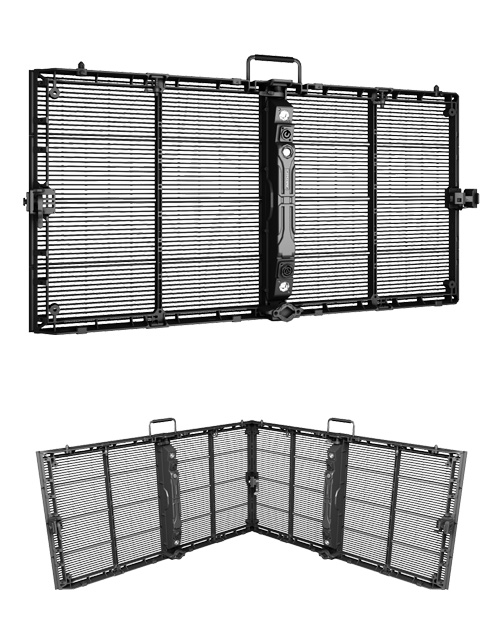
Application of LED transparent screens in restaurants and hotels
In restaurants and hotels, LED screens are often used to display daily menus, new products, pricing, service information, holiday greetings, promotional information, etc. They can also play other video content to attract people’s traffic to the venue. Since there is usually a lot of people traffic around restaurants, business owners can use this creative LED advertising method to attract potential customers. When transparent LED screens are installed indoors, both indoor customers and outdoor passers-by can easily view the video content, images, and text displayed on these screens, attracting eye-catching and enhancing customer experience.
How to Choose transparent LED screen models
The high transparency of transparent LED screens is achieved through the difference in horizontal and vertical pixel pitch. For example, the indoor P3.91-5 transparent LED screen has a horizontal pixel pitch of 3.91mm and a vertical pixel pitch of 5mm, while the P3.91-7.8 LED screen has a horizontal pixel pitch of 3.91mm and a vertical pixel pitch of 7.8mm.
These screens encapsulate LEDs within grooves in a PCB strip and install acrylic glass panels on the front and back of the PCB for a transparent effect. In contrast, traditional LED displays have uniform horizontal and vertical pixel spacing, and their PCB boards are solid black rectangles, resulting in a black appearance when not emitting light.
Generally speaking, smaller pixel-pitch LED screens have higher resolution but lower transparency. Therefore, in order to improve clarity, restaurants and hotels usually choose indoor P3.91-5 transparent LED screens. If cost is a priority, you should choose a larger pixel pitch screen, such as a P5-8 or P7.8, which may be chosen. However, achieving both high transparency and the same level of clarity as a traditional LED video wall is challenging.
The choice between pixel pitch and transparency has been one of the long-standing challenges faced by LED display manufacturers. The Smaller pixel spacing and the higher pixel density per unit area, resulting in greater clarity, but reduced transparency due to the smaller spacing between pixels.
Transparent LED screen installation site survey
When receiving customer inquiries, sales representatives need to consider the installation environment, location, area, viewing distance, viewing angle, functional requirements, etc. Depending on these specific circumstances, the supplier can provide a customized solution to customers. Alternatively, If the sales representative doesn’t view the on-site installation environment and documents the project’s requirements, it may lead to incorrect solutions.
Factors such as screen size, viewing distance, viewing angle, and installation location directly affect the pixel pitch of transparent LED screens. The installation location determines the structure and installation method of the transparent LED display. Natural lighting conditions also affect pixel pitch and sharpness. All these factors need to be considered before installing transparent LED screens.
LED transparent screen installation in restaurants and hotels
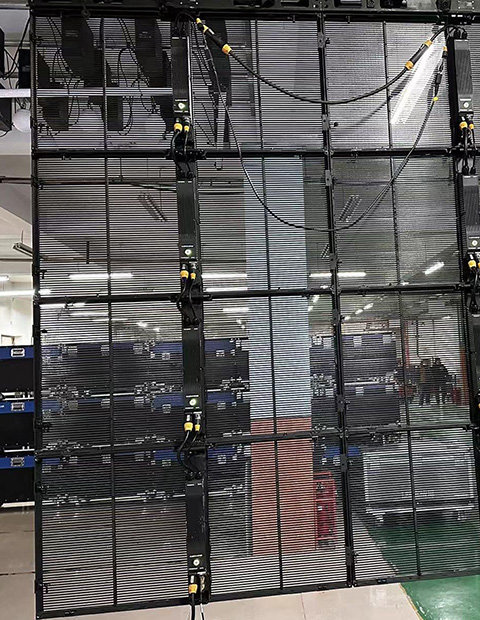
Businesses can install LED transparent screens inside glass display cabinets, or hang them in dining areas or as decorative elements. The high transparency of the transparent LED screen ensures that whether it is working or not, it will not affect the overall lighting of the room. In addition, labor and material costs can be saved due to its slim design and the absence of steel structure installation. Furthermore, unlike traditional LED screens, LED transparent screens can provide a unique visual experience and prevent viewers from aesthetic fatigue.
Due to the high transparency and energy-saving properties of transparent LED screens, they can be seamlessly integrated into glass curtain walls without obstructing indoor lighting or sightlines. Therefore, there are a variety of LED transparent screen installation methods available, including fully hidden frames, semi-hidden frames, exposed frames, hanging frames, frameless installation, etc. Below GDHANHENG briefly introduces these installation methods:
Fully hidden frame: In this method, the size of the transparent LED screen is customized to match the structure of the existing glass curtain wall. The transparent LED screen is fixed on the aluminum alloy frame. The left and right vertical bars of the glass correspond to the two sides of the aluminum alloy frame, and the upper and lower parts correspond to the upper and lower beams of the aluminum alloy frame. In other words, the frame of the transparent LED screen overlaps the frame of the original glass curtain wall, completely hiding the frame from the outside world.
Semi-hidden frame: In a semi-hidden frame installation, the horizontal or vertical structure of the glass curtain wall is either hidden or remains visible. For example, for the installation of hidden horizontal structures, the glass is embedded and fixed in the grooves, with additional reinforcement using glass adhesive on the left and right sides. On the contrary, for the installation of hidden vertical structures, the aluminum alloy vertical bars are embedded in the grooves, and an external cover is installed above the glass to hide the aluminum alloy vertical bars behind the glass.
Exposed frame: As the name suggests, when the exposed frame is installed, the horizontal and vertical structure of the LED transparent screen can be seen from the outside, clearly showing the structural components.
Hanging Frame: Hanging frame installation involves welding uprights to stainless steel brackets. The specific installation process is to connect the four claws of the bracket to the holes on the curtain wall glass, with each hole corresponding to a claw. That is, drill four holes in the corners of the glass and then fix the glass on the four claws of the stainless steel bracket.
Frameless installations: Frameless or structural glass installations are typically used on the ground floor and floor-to-ceiling windows of buildings. They are installed using the suspension method, where the glass is suspended from above via evenly distributed hangers or special profiles. The process is to fix hooks made of special profiles on the main frame of the channel steel and then hang the channel steel at the bottom of the floor or beam. To increase the rigidity of the glass, support frames or rails can be added above and below the glass.
LED transparent screen replaces traditional advertising Display
The transparent LED screen not only provides simultaneous computer control, but also wireless control via Wi-Fi-connected smartphones and iPads. Content, including videos, images, and text, can be changed on the fly based on customer preferences. In addition, they also support remote cluster control, which can control the content of transparent LED screens in different installation locations simultaneously. Therefore, transparent LED screens slowly replace traditional advertising displays such as posters, banners, and billboards.
In conclusion
The introduction of transparent LED screens in the hospitality industry, specifically in restaurants and hotels, has transformed the way businesses engage with their customers. These transparent LED screens offer a modern and dynamic method to showcase information and promotions, enhance customer experiences, and create a unique visual ambiance. As technology advances, we can expect to see more innovative applications of transparent LED screens in various industries.
